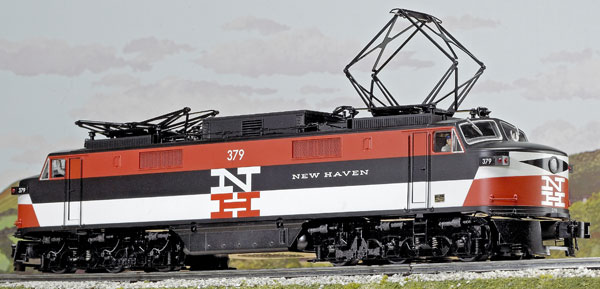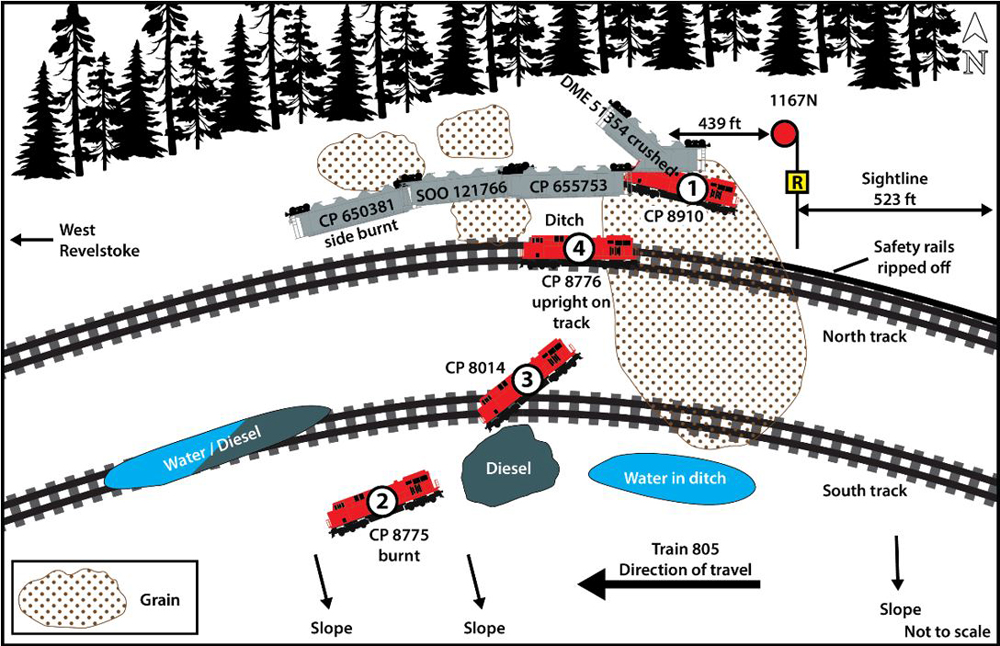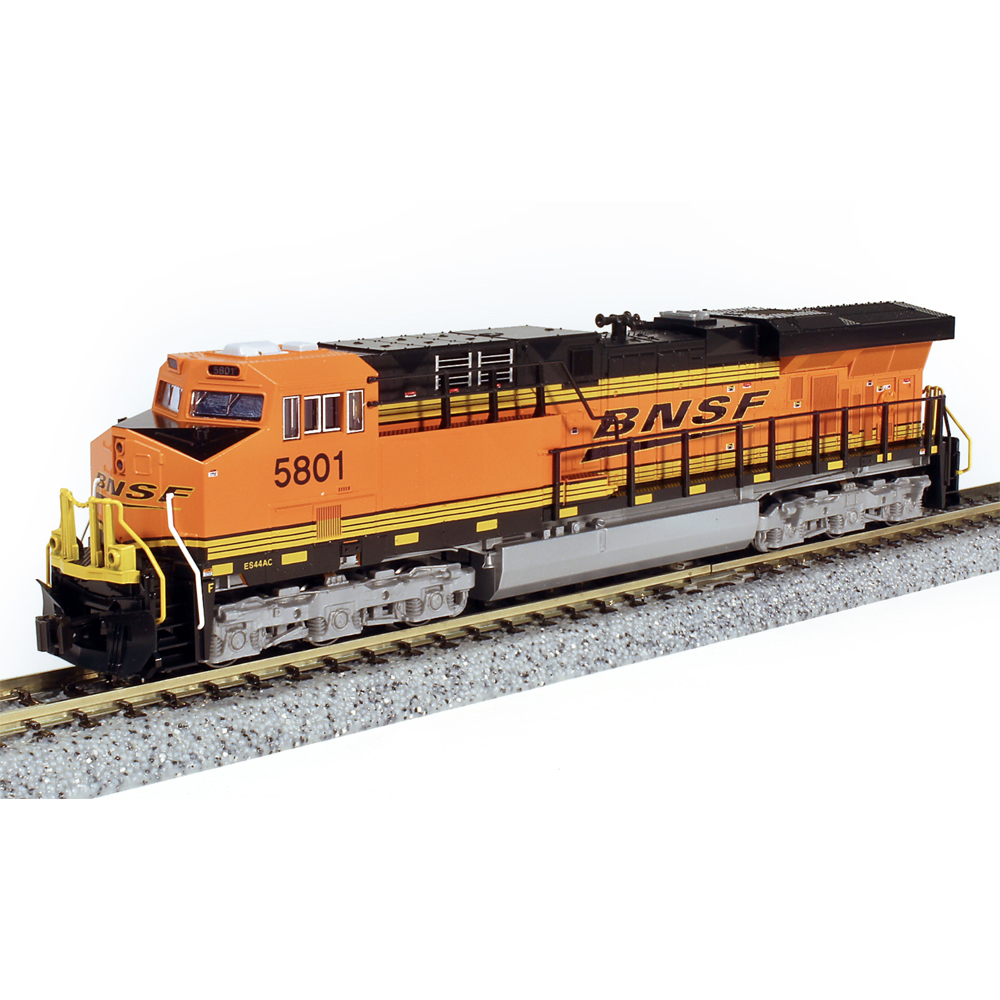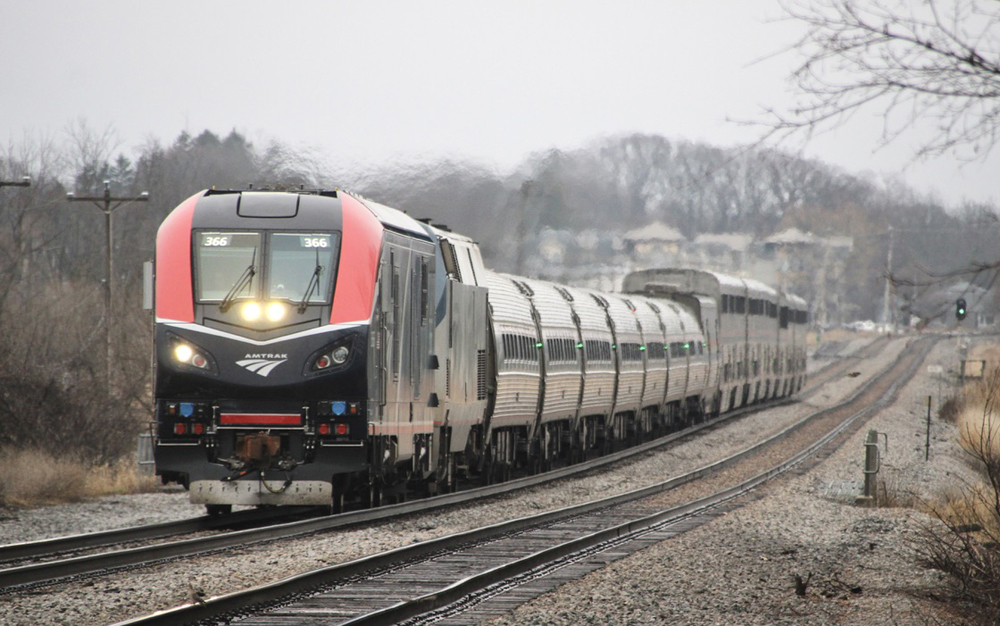Delivered in 1955, the locomotives developed a few bugs and were sent back to GE the same year. When returned to the New Haven, they delivered exceptional service, which deteriorated only with the decline of the railroad’s maintenance program. All 10 New Haven EP-5s were rebuilt in the early 1960s, with a handful making it into the Penn Central era (1969), only to be scrapped in May 1976, during the early days of Conrail. No other railroads owned EP-5s.
Many manufacturers have modeled the EP-5 in O gauge, including Lionel in the postwar and modern eras, Williams starting in 1994, and MTH in 1999 for its Premier and RailKing lines. American Flyer made an EP-5 in S gauge.
You can now add K-Line to the list. The K-Line O gauge EP-5 has been sold as a membership perk of the K-Line Collector’s Club (with three different levels of features) in New Haven and Great Northern road names. K-Line has also cataloged its EP-5 in Milwaukee Road and Pennsylvania road names, but those locomotives were to be sold through select K-Line retailers.
The model
The twin-cab design may be common in European railroading, but it is distinctly uncharacteristic in American railroad history, beyond East Coast electrified lines.
K-Line has done a nice job creating an accurate 1:48 scale model of the prototype. The tooling for this model is clean, with both cab ends being as smooth and round as can be.
Both pilots on our sample locomotive feature coil couplers and twin brake/multiple-unit lines. On both ends of the locomotive you’ll also find grab irons that are more than just bent wires shoved in a shell; they have simulated rivets keeping them in place.
Just forward of the cabs are stylish number boards with illuminated marker lights. The arched cab windows feature add-on windshield wiper arms. Inside each cab are two crew members and simulated controls. The doors all spring open, and there are separately applied handrails on both sides of the doorframes. On our sample, one of the clear plastic side windows came loose and was rattling around inside the cab. A spot of glue held it back in place.
Down the length of the locomotive, the blower filter screens (two on each side) appear to be etched brass parts painted and installed over a solid background. On the roof the cab tops have rivet, hinge, and seam detail. The roof also features simulated electrical lines and components as well as smaller, rigid overhead pantographs (think prewar-style electric operations beneath New York City).
While some manufacturers use pantographs styled after Lionel’s postwar devices, the K-Line EP-5 uses pantographs made from thinner flat metal, giving them a very airy appearance. Like postwar pantographs, they are held down by spring action. Give them a lift with a finger, and they go up.
Unlike other electric locomotives, however, you can’t remove these pantographs easily; they’re solidly anchored in place.
Down on the bottom of the locomotive is a pair of the nicest three-axle trucks I’ve encountered on an electric. Upgrades to Grand Central Terminal’s access tunnels meant that heavier locomotives could traverse the line, so the EP-5 features widely spaced axles placed in diesel-style trucks with drop equalizers and coil springs. Axles could shoulder 58,000 pounds each.
Also on the bottom of the locomotive, you’ll find two pickup rollers spread roughly 8 inches apart, along with controls for Lionel RailSounds/SignalSounds, TrainMaster Command Control Run/Program, speed-control on/off, and volume. K-Line also produces these models without TMCC and RailSounds.
The model’s frame measures approximately 16½ inches long (66 feet in O scale) and roughly 173/4 inches from coupler to coupler. The top of the pantograph is approximately 53/4 inches above the railhead.
I’ve often thought that the flashy, multi-color McGinnis paint scheme (named after one-time New Haven boss Patrick McGinnis) could make a bobber caboose look cutting edge. The execution of the bold pattern on this model is first rate. The color separation is clean and crisp, and the paint is so smoothly applied that you’d think the color was cast into the plastic shell. A favorite aspect of mine is the careful application of silver to a triangular window at the front of the cab, which contrasts with orange and black quite nicely.
Other than a builder’s plate, there are no graphic “extras,” but a well-done paint scheme is enough for me.
On the test track
Our sample EP-5 was fully optioned with TrainMaster Command Control, RailSounds, coil couplers, and K-Line’s own speed-control circuitry.
Our performance numbers for the EP-5 were first rate. Our best low-end speed was 1.8 scale mph, while the high-end speed was 80.8 scale mph. K-Line uses a diagonal approach to traction tires (left front wheel, right rear wheel) that resulted in a drawbar pull for the 5-pound 3-ounce locomotive of 1 pound 10 ounces.
We encountered a bit of low-speed jerkiness with speed control on, but the sensation disappeared with speed control turned off (unfortunately, so did the ultra-low starting speeds). K-Line’s speed-control system is the subject of a lawsuit between Lionel and K-Line (see page 23 of the November issue). Its availability on new EP-5s and other K-Line locomotives is uncertain.
We tested the EP-5 on our workshop test track and two home layouts, one of which has MTH catenary but still uses the track rails for electrical power.
We eagerly anticipated being able to run our sample EP-5 beneath O gauge catenary with its pantographs outstretched, since the home layout’s tighter O-42 curves prevented us from doing the same for our reviews of the Weaver and MTH “Little Joes” and the MTH GG1 electric, all of which require curves wider than O-42.
But our catenary test was short-circuited. The catenary layout uses Ross Custom Switches with factory-installed DZ-1000 switch machines. The K-Line EP-5’s trucks feature simulated outside third-rail collectors on both sides, just like those used by real EP-5s when operating in areas without overhead catenary, such as Grand Central Terminal.
On the K-Line model, these cast-in collectors project from the sides of the metal trucks low enough and wide enough that they whacked the rounded heads of the screws holding the DZ switch machines to the switches (see the photo on page 99). The typical result was a sparky hip-hop derailment.
Fortunately, we did not experience bumping problems with other switch machines we had on hand, including those on Lionel and MTH switches. The locomotive works fine on Ross switches that use something other than DZ-1000 switch machines.
But, back to the pantographs. We were able to try the EP-5 pantographs in raised positions on sections of the layout between track switches. Underway, the softly sprung pantograph structure leaned back on its heels and the freely moving shoe swiveled rearward on its horizontal pin.
This caused the shoe’s thin leading edge – instead of its broad upper surface – to contact the underside of the catenary. Unfortunately, the thin edge dug into most of the catenary-section joints, shaking the pantograph as the locomotive moved and raising concerns that at speed we might tear the whole structure off the locomotive’s roof. Tightening the pivot joints on the pantograph shoes might solve the problem, but we were reluctant to monkey around any further with the locomotive.
For the record, Williams, Atlas O, and postwar-style Lionel pantographs have been used on this same layout without incident.
The K-Line EP-5 is a nice model – and a stunning value if you were able to snare the now out-of-stock barebones version for its original price of a mere $100 as part of K-Line’s club membership. This model is a worthy addition to the electric locomotive fleet of any New Haven fan, but it won’t operate properly on layouts with a combination of Ross Custom Switches and DZ-1000 switch machines.















Terrific article. My grandson and I were in the market for an EP-5 to round out our New Haven livery. Cost was and is a factor. I was not aware of a K-line offering. We found an excellent dealer who was selling the Williams for $129, plus tax & shipping. The Williams version comes with horn & bell and no other "sounds". For the price we're extremely happy. It looks great when we put it up to our actual NH photos. It is also an excellent runner and could probably pull everything on my layout. For now it pulls 10 cars and a caboose with relative ease. Sorry I cannot offer any comments on the K-Line version. As I said, we didn't know that it existed.